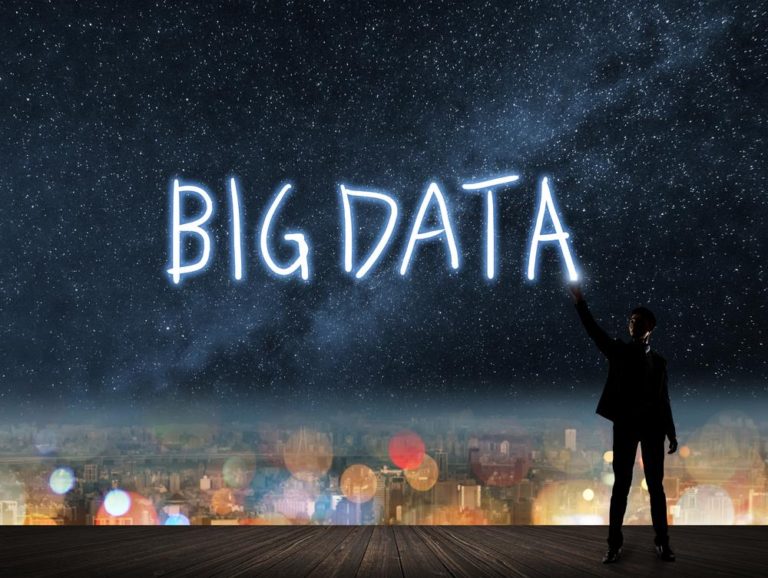Big data as a concept has been around since the early 1990’s, and quickly became sort of a buzzword that referred to data-driven business intelligence. But real understanding of the phrase was quite vague to most people. At least, until now.

We are beginning to appreciate just how much information is out there, and how it gets used. With the help of companies like microstrategy, we get a better understand as to why the use of analytics plays a large role in many businesses.
Data analytics is used by most organizations to understand their audience’s behavior in purchasing, tastes and trends. Companies can use something similar to an advanced text analytics tool to refine their marketing and even internal processes to improve their efficiency in attracting and satisfying customers.
But what kind of analytics are out there? How can these ideas benefit small companies?

Contents
What is “Big Data”?
Emphasize BIG. In our inter-connected digital world, almost everything we do generates digital records or is counted and calculated in somebody’s statistics. By 2020, our digital stores of data are expected to grow to around 44 zettabytes, or 44 trillion gigabytes.
Data is being collected by every industry through purchases, web business, social media, search engines, smart phones, customer feedback, and more. Companies are establishing metrics to measure the information they gather on themselves. Big data analysis can be applied to a wide range of business activities, such as fraud detection, sales forecasts, traffic management, consumer opinions, risk management, return on investment, and virtually anything you can capture measurements on. Typically, any company that handles data in any format might require DPO services, also known as a Data Protection Officer.
Also read:
What All You Need To Know Before Hiring A Trustworthy Seo Firm?
How to Build a Solid Customer Service Team
All You Need To Know About Growth Hacking In Real Estate
The big data definition applies to datasets that are:
* Too big to handle efficiently with traditional data processing methods like relational databases and spreadsheets.
* The process of structuring, loading, mining, and reporting must be fast to make these huge datasets of practical use.
* The variety of data types (text, numbers, images, documents, etc.) is too much for conventional databases to integrate so that they can be used to produce reliable, consolidated results.
Basically, these three factors define a need for better, large-volume analytic methods. Even with the challenge of getting practical and verifiable insights from the sea of data hidden in our computer memory, current business intelligence software has risen to the challenge and is evolving to handle even bigger datasets and more disparate data sources.
With the right understanding, BI tools can evaluate large datasets to help businesses identify real-life patterns and relationships that they might otherwise have never noticed. BI typically is used in descriptive, diagnostic, prescriptive, or predictive analytics.
The four types of big data analytics:

Descriptive Analytics:
This method helps to reveal to analysts what is happening now based on both old and new data. It gives near-real-time insights on what conditions are useful today so that businesses can respond quickly. This information is typically displayed on real-time dashboards, program alerts, or disseminated as email updates.
Descriptive data mining is often considered the last option in terms of big data value, but this form of analytics can be useful in discovering patterns that offer a fresh look at your practices. A common example of descriptive analytics lies in assessing credit risk; evaluating historical financial performance can provide a good measure of the risks in extending credit to a particular customer. Descriptive analytics can also be useful in the sales cycle; for instance, it provides a baseline for categorizing customers by their likely product selections.

Diagnostic Analytics:
This looks at past performance as measured by established business metrics or key performance indicators (KPIs) to investigate issues (or successes) by exploring what happened and why, and suggest any needed improvements. This is usually deployed via dashboards or regularly scheduled reports.
Diagnostic techniques are employed when it’s necessary to find out why a certain event or condition came about. In tracking your social media campaigns, you might see a sudden spike in shares with no obvious change to initiate such a response. Diagnostic analytics can help you to consolidate thousands of users and their activities to determine what the common elements are to these users and thus track down what social media factors led to the jump in sharing.

Prescriptive Analytics:
This analytic method suggests courses of action to be taken. This approach evaluates historical data to provide valuable insights that lead to rules and procedures that should be adopted for optimizing sales, customer satisfaction, financial goals, and a range of other objectives.
Prescriptive analytics can be valuable, but are often overlooked. It’s estimated that 13 percent of companies use predictive analytics but only three percent use prescriptive methods. This type of analytics is used to discover answers to specific problems. For example, a company promoting a new “smart” oven can determine who the most common customers of such an appliance are, and discover their likes and dislikes to focus marketing efforts.

Predictive Analytics:
This is forecast analysis to demonstrate probable scenarios of what will happen as a result of a given set of factors. This often used, for example, to project a forecast of coming revenue for planning and budgeting.
Intelligent forecasting identifies past patterns in big data to predict future trends. If sales of a certain Wi-Fi router are increasing but dropping overall with a certain demographic, predictive analytics will indicate this trend. Many companies apply forecasting to every step in the sales cycle. It helps to assess the potential risks and rewards in certain areas and allows companies to plan for these likely outcomes.
The value in analytics
The ability to use big data to solve problems, improve efficiency, and benefit customers makes your data one of the most valuable assets your company has. The data used in your systems and collected in cyberspace needs to be protected against hackers and other malicious attacks. If it becomes corrupted or unusable, even in part, your analytics might be pointless.
Utilizing big data and BI analytics can provide clear advantages to your business in many ways. Analytics allows you to search for details as well as identify large-scale patterns. Mining large datasets to uncover actionable facts is invaluable to making the correct business decisions. Something that can be a major inhibitor to analytical success is poor data quality and standardization. Something that can help with this data validation, which can be achieved using Paxata Rapid Data Profiling.


